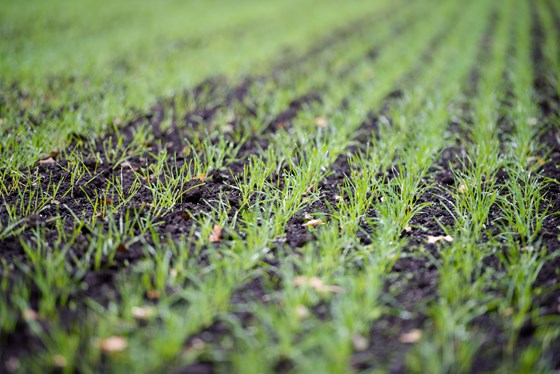News from the Field - Jan 2017
I want to start by saying thank you to all our local customers for another successful Christmas tree season. It is great to see so many familiar faces from Methley and the surrounding Leeds & Wakefield area and we do appreciate your custom.

I must also thank the Rivers Meet café in Methley, which provided welcome refreshments at weekends to our customers.
As I write, the winter is still mild and our arable crops are developing rapidly. We continue to keep on the lookout for pigeons, which can damage our oilseed rape crop, and to keep them away from the fields we use gas-powered scarers, which you may hear going off from time to time.
The cabbage harvest is now complete in the fields around Park Lane, which are part of a field swap we operate with a neighbouring farmer. This crop is destined for coleslaw, which will be supplied to all the major supermarkets.
Harvesting any crop at this time of year can be a muddy exercise, so I hope that any mud brought out on to the roads during cabbage harvest has not been too inconvenient to you. We try our best to minimise this, and always clear up the mess by the evening, and brush the road throughout the day if conditions require it.
One thing that we have noticed in the last year is an increase in rural crime, particularly fly-tipping – the illegal dumping of rubbish in the countryside. This is frustrating when we work so hard to keep the farm tidy. The council do clear up the roadside deposits in due course, but anything left in our fields is our responsibility to dispose of.
Poaching also continues to be a problem, with 4x4s and dogs moving across our land in search of hare and deer. Hare-coursing is against the law and so I will soon be putting up some notices in the area, urging anyone who sees this illegal activity occurring to report it to the police.
In the days ahead we have around 6,000 new Christmas trees to plant, which will take two to three weeks to do. By the end of the month, weather permitting, we will have moved our attention from trees to hedges, and will be filling any gaps we find with additional plants and saplings. Wet January days will be spent either in the workshop maintaining machinery for the season ahead, or in the office looking at soil maps.
Every five years we take multiple soil samples across every field using a quad bike. These samples are then tested and the results turned into soil maps that allow us to plan our GPS fertiliser applications for the year ahead. This ensures that our crops receive the optimum nutrition, whilst minimising wastage. Comparing the latest soil maps to the ones created five years ago, we can see that the nutrient content of the land is becoming much more uniform across the farm… so it looks like we might be doing something right!
Martin Hodgson, Farm Manager